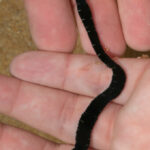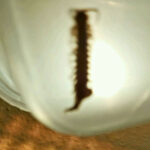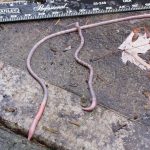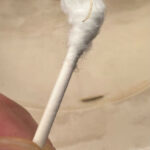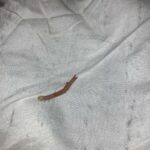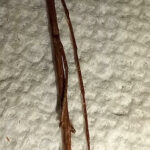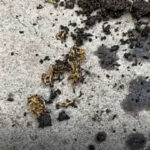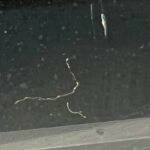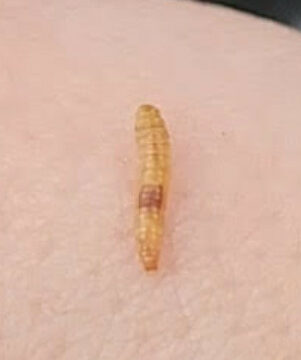
I found this kind of worm on my bed”, writes Heeae about the white, translucent worm pictured below. “I don’t put sheets on my bed, only plastic to cover it. At first, I thought it was from my food, but after I thoroughly inspected it, I couldn’t find any other worms. I cleaned my bed and the surroundings, and almost forgot about it. Then, today the worm was there again. It’s so tiny, less than 1cm (0.4-inches), a little bit transparent. I’m so scared that if I went to sleep, it would be on my body. And I’m in Indonesia.” Our first instinct would be to identify this as a clothes pest, but Heeae seems to refute this possibility, stating clearly that she does not use sheets on her bed. That still has us wondering if she does not have a duvet or pillows, because those types of materials would also attract clothes pests.
In the case that she does have these items, then we would propose that this is some type of clothes pest. The lack of a distinct head has us confused, as that would make things a whole lot easier. For example, if it had a brown head to go with its translucent body, we would have identified it as a clothes moth larva. Similarly, if it had dark entrails visible through its skin, we would have identified it as a flea larva (which can be found on bed sheets as they eat loose hair and fur, as well as other organic materials like faecal matter and dead bugs). However, the practically featureless body of this creature has us stumped.
That said, one possibility we thought of was a woodlouse larva. Although we cannot see any antennae or legs in this photo, it is admittedly of poor resolution – that paired with the fact that the creature is likely very tiny, and its limbs would also be translucent, has us thinking that it is entirely possible that this critter does have legs and antennae, as a woodlouse larva does. Woodlice, commonly referred to as pill bugs or roly polies because of their ability to roll up into balls, are terrestrial crustaceans, similar to lobsters and crabs. However, they are actually the only crustaceans that are able to live on land fully. Their diet is very extensive, including plants, animal faeces, decaying animal flesh, dead bugs, and even metals. It does not include humans or pets, and they are not harmful in any way to either, so Heeae does not need to worry about that.
In conclusion, we think Heeae might have found a woodlouse larva. She can just move this one outside and call it a day: it is not uncommon for people to find singular woodlice in their homes. We hope this helps, and we wish Heeae the very best!
All About Worms is always free, always reader-supported. Your tips via CashApp, Venmo, or Paypal are appreciated! Receipts will come from ISIPP Publishing.
You might also find these guys interesting!




